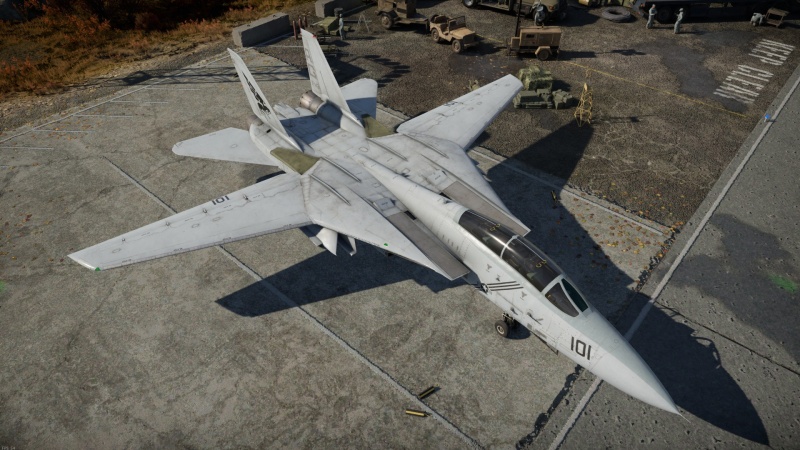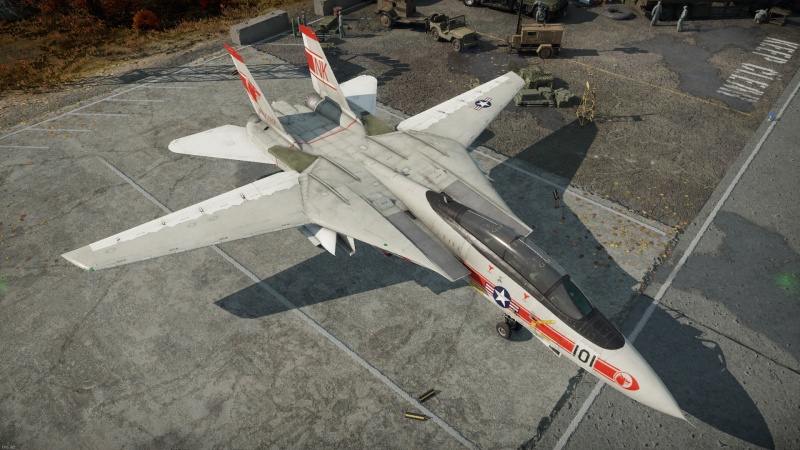The F-14 Tomcat, particularly the F-14B variant, is often celebrated as one of the most iconic and capable fighter jets in the history of naval aviation. Its variable-sweep wings, powerful radar, and formidable weaponry made it a legend during its time with the U.S. Navy. However, despite its many strengths, the F-14B Tomcat also had notable disadvantages that ultimately contributed to its retirement. This article takes a critical look at the drawbacks of the F-14B, shedding light on the challenges that faced this storied aircraft.

High Maintenance Requirements
One of the most significant disadvantages of the F-14B Tomcat was its high maintenance demands. The complexity of the aircraft, especially its variable-sweep wing mechanism, required extensive upkeep. Mechanics often found themselves working long hours to keep the Tomcat flight-ready, and the aircraft’s maintenance costs were considerably higher compared to newer fighters. The F-14B’s Pratt & Whitney TF30 engines, while powerful, were notoriously temperamental and prone to issues such as compressor stalls, further complicating maintenance efforts.
Aging Technology
By the time the F-14B entered service, technology in the aviation industry was rapidly advancing. While the F-14B featured improvements over the earlier F-14A, including upgraded engines and avionics, it still lagged behind in certain areas compared to newer aircraft like the F/A-18 Hornet. The analog systems and older avionics of the F-14B became increasingly outdated as digital technology and more advanced radar systems were developed. This technological gap meant that the F-14B required continuous upgrades to remain competitive, adding to its operational costs.

Limited Air-to-Ground Capability
The F-14B Tomcat was primarily designed as an air superiority fighter and fleet defense interceptor, excelling in air-to-air combat. However, its air-to-ground capabilities were limited, especially compared to multirole fighters that were becoming more prevalent. While the F-14B could carry a variety of air-to-ground munitions, its primary role remained focused on air superiority, limiting its versatility in modern combat scenarios where multirole functionality is highly valued.
Fuel Efficiency and Range
Despite its powerful engines, the F-14B was not known for its fuel efficiency. The TF30 engines, while providing the necessary thrust for the aircraft’s demanding performance, consumed fuel at a high rate. This limited the Tomcat’s operational range and endurance without the need for aerial refueling. In contrast, newer fighters with more efficient engines could operate longer and more economically, reducing the logistical burden on carrier operations.
![Development] F-14A Tomcat: Into the Danger Zone! - News - War Thunder](https://static.warthunder.com/upload/image/0_2022/5_May/F14A/460_02_f_14a_early_39a24c34283e5f89d430ea770f99cb6f.jpg)
Cockpit Ergonomics
The F-14B’s cockpit, designed in the 1960s and 1970s, posed ergonomic challenges for pilots and radar intercept officers (RIOs). The layout of instruments and controls was not as user-friendly or intuitive as those in later aircraft. Pilots and RIOs had to manage a high workload, especially during complex combat scenarios, which could lead to increased fatigue and decreased situational awareness. Modern fighters have since adopted more pilot-friendly cockpit designs, incorporating advanced human-machine interfaces that enhance operational effectiveness.

Expensive Upgrades and Operational Costs
As the F-14B aged, the cost of maintaining and upgrading the aircraft continued to rise. Integrating new technologies and systems into the older airframe proved costly and time-consuming. The U.S. Navy faced tough budget decisions, and the high operational costs of the F-14B became increasingly unsustainable. In contrast, newer fighters like the F/A-18 Super Hornet offered lower maintenance costs, easier upgrades, and greater overall efficiency, making them more attractive options for the Navy.

Conclusion
The F-14B Tomcat remains a legendary aircraft, celebrated for its contributions to naval aviation and its iconic role in pop culture. However, its disadvantages, including high maintenance requirements, aging technology, limited multirole capability, fuel inefficiency, cockpit ergonomics, and expensive operational costs, ultimately led to its retirement. The legacy of the F-14B is a reminder of the ever-evolving nature of military aviation, where even the most celebrated aircraft must eventually make way for newer, more advanced technologies. As we look back on the F-14B’s storied career, we also acknowledge the lessons learned and the advancements that have shaped the future of aerial combat.





